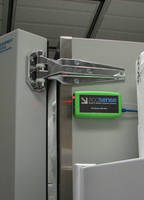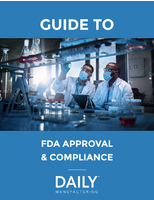Continuous Temperature Monitoring in Medical Refrigerators and Freezers

CHESTERLAND OH - CAS DataLoggers recently provided the data logging solution for a hospital searching for a more cost-effective way to maintain the frigid temperatures for their valuable products in cold storage. The hospital's costs of performing manual temperature measurements on their high-quality medical freezers and refrigerators were quickly adding up:
1 Minute / Measurement
x 6 Measurements / Day
x 30 Days / Month
x $20 Hour
$60 Per Month / Single Freezer
*assuming the facility was staffed 24 hours a day
Extra personnel often had to be brought in to monitor and record the temperature, further raising the cost and indicating the need for a better monitoring and recording solution. Personnel always had to stay mindful that if a temperature increase occurred in cold storage and lasted beyond a certain threshold, the stored drugs or samples would become unusable, costing significant time and money to replace.
Another dilemma was the temperatures inside the refrigerators and freezers weren't uniform throughout the units. The cold air entered the units from only one location and measured by the thermostat at only that location. As a result, a temperature gradient was always noticeable. Hospital staff remained concerned that there was not a single, reliable temperature inside the freezers.
Installation of an A1-13 Wireless Temperature Data Logger per each grouping of 1-3 freezers/refrigerators along with an E1-19 Temperature Probe inside each cooling unit placed in secure locations on the hinge side of each refrigerator proved successful in achieving measured results. An additional unit, an E1-34 Temperature Dampener, was included with probes to insure consistent temperature readings. A B1-06 Wireless Gateway with built-in 10/100BaseT Ethernet was then installed per each wireless "group" to make the data online easily accessible. The gateways' internal data storage would compensate in the event of Internet outages.
The A1-13 data loggers were then activated up to their 90' indoor ranges, coordinating each group of temperature probes reducing the cost per measurement. The temperature probes' external sensors were capable of detecting a wide temperature range of -80°C (-112°F) to +150°C (302°F). The probes, with their attached dampeners, made the temperature inside the freezers read uniform, removing the problem of temperature gradients. The wireless gateways each supported up to 16 sensor pods, sending all data to secure servers or sending it as a local ASCII stream for incorporation into the client's custom software such as LabView. Data online was able to be downloaded as a CSV file and loaded into most database applications.
The hospital immediately benefitted in several ways from installing the new wireless equipment. The economic benefits were considerable - compared to manually recording the temperature as required by regulatory agencies, automated monitoring was far less expensive and much more reliable all the while being documented for future reference. The temperature dampeners on the probes allowed the client's monitoring system to measure the temperature of the refrigerator contents rather than simply measuring the air temperature, increasing the safety of the items in cold storage. The dampeners also smoothed out the temperature readings over time and slowed their response, causing fewer false alarms due to defrosting cycles and/or door openings. Hospital staff could also set the warning limits for a narrower temperature range if required.
The system's many programmable features also increased overall flexibility in alarm settings. For example: the wireless systems could check for alarms at different intervals than those used to record data. A typical setting for the customer's medical refrigerators was 10 minutes, with the trigger filter set to require 3 data points in a consecutive order to be out of limits before the alarm was triggered. The alarms generated by the system for each freezer could be sent to customized phone or email lists, as it was common in the hospital to have several "owners" of the freezers.
The hospital's data storage was also much improved over the manual method, with the new wireless gateway forming a connection between the data and the Internet. This allowed personnel to easily access all the data from one source, further ensuring the safety of the cold storage products. Extended-life battery packs were chosen as an efficient solution for the client's wireless installations, since 110v wiring was often limited in the freezer rooms.
For further information on temperature and humidity monitoring solutions, cold chain logistics and transport applications, wireless communications, data acquisition and control, or data logging and remote monitoring applications, contact a CAS Data Logger Applications Engineer at (800) 956-4437 or visit the CAS website at www.DataLoggerInc.com.
Contact Information:
CAS DataLoggers, Inc.
12628 Chillicothe Road
Chesterland, Ohio 44026
(440) 729-2570
(800) 956-4437
sales@dataloggerinc.com
www.DataLoggerInc.com




